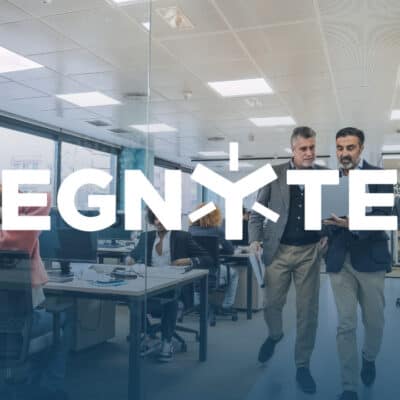Top 6 Priorities for AEC IT Leaders to End Data Chaos

The stakes are high if you’re leading IT at an architecture, engineering, or construction firm. Projects are moving faster, files are getting bigger, and your teams need access to the correct data, wherever they are and whatever tools they’re using. The problem is that too many firms are still stuck with fragmented systems, siloed data, and processes that don’t scale.
Here are six practical steps to clean up your environment, support your teams, and reduce risk without adding friction.
Consolidate Your File Workflows
Chances are, your data lives in more places than you’d like. Multiple systems, local drives, and scattered storage make it hard to keep up.
Here’s where to focus:
- Set up a centralized data hub that supports both project and business files, so everyone’s working from the same playbook
- Make sure it integrates with your existing platforms to avoid duplicate work
- Standardize how files are stored and accessed to simplify handoffs between the office, field, and external partners
Make Remote Access Secure and Simple
Field teams and remote workers need quick, reliable access to project files. If you’re still relying on VPNs or local syncs, it may be time to consider more efficient alternatives.
Instead, aim to:
- Use role-based permissions to control access by team, role, or project
- Look for secure, cloud-first access that doesn’t require VPN or IT intervention
- Have ransomware detection and quick recovery tools in place to protect your environment
Build Repeatable Structures That Scale
Every project should follow a consistent data structure. Without it, teams are more likely to encounter version issues, rework, and delays.
Set your teams up for success by:
- Using templates to create consistent folder structures and permissions
- Automating file tagging based on naming conventions or metadata
- Training teams on best practices, then reinforcing them through automation
Use AI to Preserve What Your Teams Know
As experienced staff leave and new hires join, your institutional knowledge is at risk. AI can help close that gap.
Start by:
- Tagging and classifying files automatically so nothing gets buried
- Using innovative search tools to surface information quickly, even for new team members
- Summarizing large files so the key details are easy to understand and share
Manage the Full Data Lifecycle
Project data isn’t just about storage. You need to manage it from kickoff through closeout and long after.
You can do that by:
- Automating retention and archival policies when a project wraps
- Keeping audit logs so you know who accessed or changed what
- Setting expiration dates for access to prevent long-term exposure
Align IT Strategy with Business Outcomes
Your tech stack should help the business move faster and smarter, not just keep the servers running.
To stay in sync with leadership:
- Focus on tools that support your existing workflows and reduce friction
- Measure and share the business impact of your IT decisions
- Get early buy-in by showing how IT supports faster delivery, better margins, or reduced risk
Final Thought
The most effective AEC IT leaders focus on removing friction and empowering teams. If current systems are creating bottlenecks or exposing security gaps, it may be time to reassess. Clean data workflows, strong governance, and innovative tools can drive make a real difference for IT and the entire firm.
Want to know how leading AEC firms are simplifying their environments without starting from scratch?




